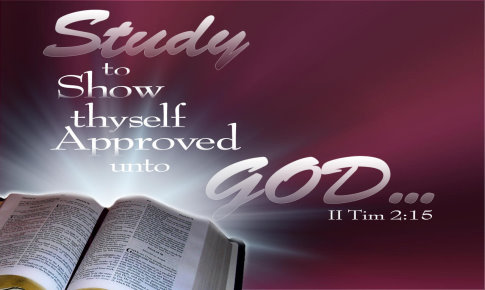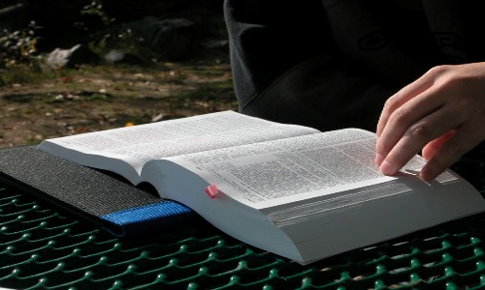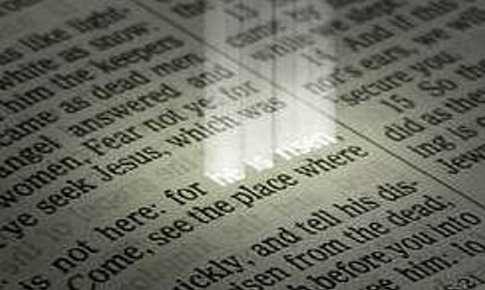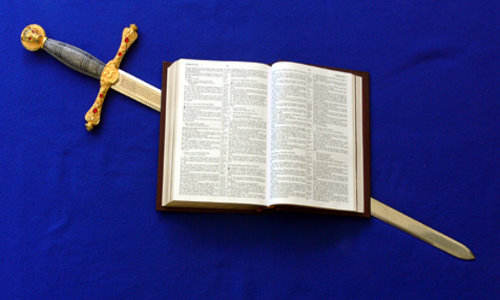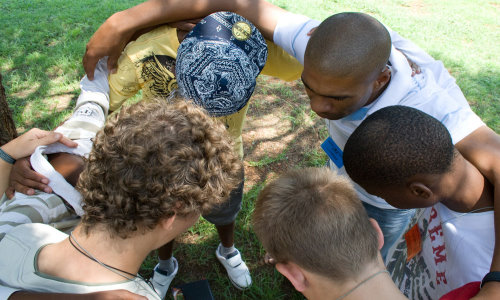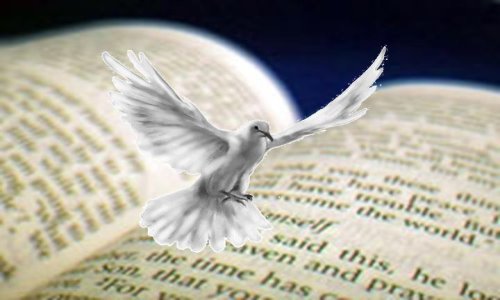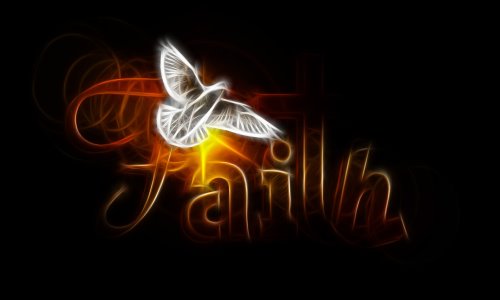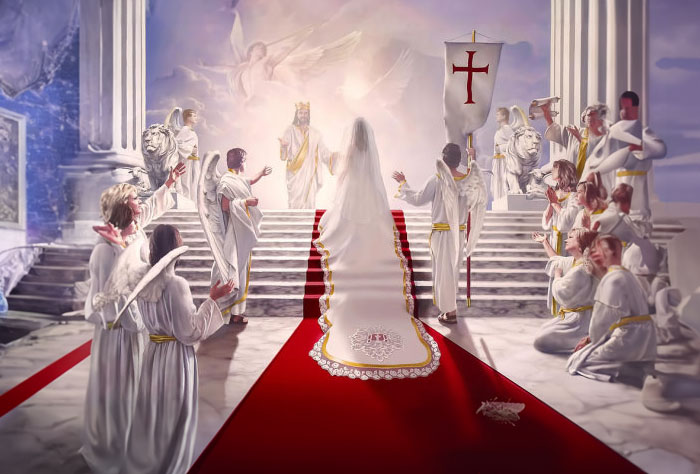
Ephesians 3:9
And to make all men see what is the fellowship of the mystery,
which from the beginning of the world hath been hid in God,
who created all things by Jesus Christ:
Steven wrote:
I don't understand the dispensation of the mystery you talk about. I don't think there ever was a mystery, only our lack of understanding. God's promise has always been the same. I will be your God, and you will be my people. Christ's mission was pointed to since the foundation of the Earth. After Adam and Eve sinned, God replaced the coverings they made themselves with skins, a sacrifice. I know it does not say it, but I believe it was a lamb. To cover their nakedness was the first sacrifice pointing to Christ's mission.
Dear Steven,
God Bless you, and thank you for writing. Many Christians today believe all who have called upon the name of The Lord are of the same body, but the Scripture clearly speaks of the family of God (to which all saved ones are members) and the saints and faithful ones who are members of His Body (those who believe what God has written regarding His calling and sphere of blessing in Heavenly Places). One huge problem that the believers today have is Rightly Dividing the change that happened at the time of Acts 28:28. For the most part, they see no difference in those Books of the Bible written before or after Acts 28:28 and thus can not see the difference in The Calling, Hope, and Sphere of blessing between these groups of believers. We hope this teaching will begin to show a little of the great differences between The Hope of Israel, who is the wife of Christ, and those believers whom God has called to be members of His Body.
Body
The Greek word soma, which is translated as body in the New Testament occurs 147 times and is translated as body in all passages except two where it is rendered slave (Rev. 18:13) and bodily (2 Cor. 10:10). In the majority of cases soma refers to the actual physical body (Matt. 5:29; Matt. 26:12), in some cases it refers to the spiritual body that shall be given in Resurrection (1 Cor. 15:35, 1 Cor. 15:37, 1 Cor. 15:44). With these aspects of the term we are not immediately concerned. The word body, however, is used in 1 Corinthians, Ephesians, and Colossians of a believing company or church, and to these references we now turn. The references in 1 Corinthians to the body as a company or church are found in chapters 10 to 12. This company is made one body by baptism.
- For by one spirit are we all baptized into one body, whether we be Jews or Gentiles, whether we be bond or free; and have been all made to drink into one spirit (1 Cor. 12:13).
During the same dispensation and referring to the same baptism, the same apostle wrote of the same company:
- For as many of you as have been baptized into Christ have put on Christ. There is neither Jew nor Greek, there is neither bond nor free, there is neither male nor female: for ye are all one in Christ Jesus. And if ye be Christs, then are ye Abrahams seed, and heirs according to the promise (Gal. 3:27-29).
Therefore, The one body of 1 Corinthians 12 is a realization of the promise made to Abraham and must not be confused with that which had never been revealed at that time. We must not attempt an exposition of 1 Corinthians 12 without referring to 1 Corinthians 10, for to do so will be fatal to a true understanding:
- Moreover, brethren, I would not that ye should be ignorant, how that all our fathers were under the cloud, and all passed through the sea; and were all baptized unto Moses in the cloud and in the sea; and did all eat the same spiritual meat; and did all drink the same spiritual drink (1 Cor. 10:1-4).
1 Corinthians 12 not only opens with a desire that the reader should not be ignorant, but there is also a similar emphasis on the word 'same,' The 'same' spiritual meat, and The 'same' spiritual drink (1 Cor. 10:3-4). The 'same' spirit, The 'same' Lord, The 'same' God; The 'same' spirit (1 Cor. 12:4-9). To refuse to compare these passages and be guided by this comparison is to set aside the principle of interpretation already laid down in 1 Cor. 2:12-13. Not only are these repetitions of the desire that the Corinthians should not be ignorant, and the stress upon the same, but there is also the emphasis upon eating and drinking:
- They did all eat the same spiritual meat: and did all drink the same spiritual drink. (1 Cor. 10:3-4).
Behold Israel after the flesh: are not they which eat of the sacrifices partakers of the altar? (1 Cor. 10:18).
Ye cannot drink the cup of the Lord, and the cup of devils (1 Cor. 10:21).
Take, eat: this is My body. As often as ye eat this bread, and drink this cup, ye do shew the Lords death till He come (1 Cor. 11:24-26).
These passages cannot be separated from the reference in 1 Corinthians 12:13.
- For by one Spirit are we all baptized into one body, whether we be Jews or Gentiles, whether we be bond or free; and have been all made to drink into one Spirit.
The basis of the argument of the apostle in 1 Corinthians 10 to 12 is the baptism of all Israel unto Moses and their consequent share in the spiritual meat and drink that followed. When he comes to expand and apply this in 1 Corinthians 12, he opens the subject by saying: Now concerning spiritual gifts, showing that he is now about to develop the typical significance of the spiritual meat and drink that all Israel enjoyed. Consequently, he calls upon all to recognize that while there are most certainly diversities of gifts, differences of administrations, or diversities of operations, these all come from the same Spirit, the same Lord, and the same God. In short, the body of 1 Corinthians 12 cannot be separated from the typical history of Israel or the possession and use of spiritual gifts. To make it evident that spiritual gifts are the feature of this chapter, let us note the following facts:
- In the opening verse, the apostle introduces the subject with the words Now concerning spiritual gifts.
- In 1 Cor. 12:2-3, he differentiates between those spiritual gifts that are from God and those that belong to the evil one.
- Having subdivided his subject, he now deals specifically with those gifts which are of God.
- In 1 Cor. 12:5-11 he sets out in much detail the diverse nature of these spiritual gifts, enumerating, among others, healing, miracles, prophecy, tongues, and interpretation. But, however diverse these gifts may be, he takes us back to their one and only source, "But all these worketh that one and the self-same Spirit dividing to every man severally as He will" (1 Cor. 12:11).
- Extending this idea, the apostle immediately introduces the figure of the body: For as the body is one, and hath many members, and all the members of that one body, being many, are one body, so also is The Christ (1 Cor. 12:12).
- This is followed by a reference that links this theme with the baptism of Israel unto Moses and the Red Sea: For by one Spirit are we all baptized into one body . . . and have all been made to drink one Spirit (1 Cor. 12:13).
- From this develops the remainder of the argument, which speaks of the human body, with its eye, its hand, its foot, and even its uncomely parts, which proves that the Church, which is His Body, is not in view, for there are no uncomely parts there, and of that Body, Christ alone is The Head, whereas, here we have as many references to the various functions of the head (eye, ear, nose) as of the rest.
- To demonstrate that these members of the body refer to the distribution and functioning of spiritual gifts, observe the following features:
- But now hath God set the members every one of them in the body, as it hath pleased Him (1 Cor. 12:18).
- And God hath set some in the church, first apostles, secondarily prophets, thirdly teachers, after that miracles, then gifts of healings, helps, governments, diversities of tongues (1 Cor. 12:28).
Here, then, is the employment of the figure of the body definitely related to the type of Israel's baptism unto Moses, definitely related to the possession and the exercise of spiritual gifts, definitely related to the promise made to Abraham, but entirely unrelated to a Church, whose members were chosen before the foundation of the world, a Church where spiritual gifts are unknown, a Church whose very existence was a Mystery unrevealed when 1 Corinthians was written. The student who observes the frontiers set up by Dispensational Truth will never appeal to 1 Corinthians 10 to 12 as a passage that speaks of the Church of the One Body of Ephesians. We turn now to The Epistles of Paul, written after Acts 28:28, to make known The Truth of The Mystery so that we may obtain information concerning The Church, which is called The Body of Christ.
First, let us see the distribution of the word Body in Ephesians.
The Body
- A Eph. 1:23. The Church which is His Body.
- B Eph. 2:16. Reconciliation.
- C Eph. 4:4. The One Body.
- D Eph. 4:12. Gifts for building up.
- E Eph. 4:16. Fitly framed together.
- D Eph. 4:16. Members for growth.
- C Eph. 5:23. Christ the Head.
- B Eph. 5:28. Love.
- A Eph. 5:30. The Church and members.
Two passages fall within the doctrinal section, namely Ephesians 1:23 and Eph. 2:16, the remaining seven being found in the practical section, chapters 4 and 5. Let us examine the doctrinal passage first, as these will supply the fundamental teaching of Ephesians concerning the Body. These references to the Church, The Body, are not isolated but form an integral part of the contextual argument, and just as we found the body of 1 Corinthians 12, vitally and inseparably connected with Moses, Israel, Abraham, and spiritual and miraculous gifts, so we shall find the reference to The Body in Ephesians 1:23 vitally and inseparably connected with the exaltation of The Saviour Far above all. There are seven sections in the doctrinal portion of Ephesians, and Ephesians 1:23 falls within the third of these subdivisions. The following is its analysis:
Ephesians 1:19 to 2:7
A a Eph. 1:9. Energy (energeia energeo). Mighty power.
b Eph. 1:20. Wrought in Christ.
- B c Eph. 1:20. Raised HIM. Heavenly places.
- c Eph. 1:20-21. Seated HIM. This age or the coming one.
- c Eph. 1:22-23. Gave HIM.
- C The Church THE BODY. THE FULNESS.
- A a Eph. 2:1-2. Energy (energeo). Prince of power of air.
- b Eph. 2:2-3. Wrought in sons of disobedience.
- B c Eph. 2:4-5. Quickened US. Heavenly places.
- c Eph. 2:6. Raised US. The ages to come.
- c Eph. 2:6-7. Seated US. In heavenly places.
It is evident from this passage that The Church of the One Body is vitally and inseparably connected with Christ in His exaltation Far above all in Heavenly Places. It is sufficient here to say that this sphere is never spoken of in connection with any other calling but that of The Mystery, which fact of itself lifts the Church of The One Body that is associated with it into a distinct place in The Purpose of the ages, not to be confused with the promises made to Abraham or any other age purpose that belongs to lower realms. These Heavenly Places are further defined as Far above all principality and power (Eph. 1:21), Far above all heavens (Eph. 4:10). It is where Christ sitteth at the right hand of God (Eph. 1:20), and the superlative and marvel of Grace is that this Church of The One Body is reckoned by God not only to be raised together but also seated together in those self-same Heavenly Places in Christ Jesus' (Eph. 2:6).
Then further, the title The Body is not the final title of this blessed company. The full measure of Grace and Glory is realized when we read: The Church which is His Body, the Fulness of Him that Filleth All in all (Eph. 1:22-23). When the import of this world Fulness is perceived, something of the place of this company of the redeemed will be realized.
Sufficient has been brought forward to demonstrate the unique character of this high calling, which makes it impossible, when once seen, to confuse this Church of The Body with the references already considered in 1 Corinthians 10 to 12.
The Bride and The Body
Dr. R. A. Hadden wrote:
- It is assumed almost universally that the Church of the present dispensation is at once the "Body of Christ" and "the Bride" ... Traditional theology, unscriptural hymnology, amazing disregard for a correct interpretation, intolerant zeal for dogmatic human opinions together with careless defective instruction, have united for generations in perpetuating a phase of teaching possessing no foundation in or authority from Holy Scripture and perpetrating a system that plunges multitudes of believers in dire confusion concerning the plan, purpose, and programme of God for "the Church which is His Body" as distinct from the Divine purpose concerning another outcalling known as "the Bride, the Lambs wife."
Sir Robert Anderson wrote:
- Is the Church the Bride of Christ? Let us begin by correcting our terminology. In the Patmos visions, we read of "The Bride, the Lamb's wife," but "the Bride of Christ" is unknown to Scripture... With the close of the Baptist's ministry, both the Bride and the Lamb disappear from the New Testament until we reach the Patmos visions. In Revelation 21, the angel summoning the Seer to behold "the Bride" the Lamb's wife, and he showed him "the Holy Jerusalem descending out of heaven from God". The twelve gates of the city bear the names of the twelve tribes of the children of Israel, and on the twelve foundations are "the names of the twelve apostles of the Lamb." ... it is the city for which Abraham looked ... These apostles of the Bride are not the apostles who were given after the Ascension for the building up of the Body of Christ - the apostles of this Christian dispensation, chief among whom was Paul. They are the twelve apostles of the Lord's earthly ministry to Israel, who shall sit on twelve thrones, judging the twelve tribes of Israel (Matt. 19:28).
These two quotations contain enough to make the present investigation both serious and imperative. There is sufficient evidence for believing that the Church, thus denominated in Ephesians 1:22-23, is unique, is entirely disassociated from the hope and calling of Israel, and was indeed hidden in the mind of God, unrevealed even in His Word until the present dispensation of The Mystery followed the dismissal of Israel in Acts 28:28.
If we call upon the O.T. to bear witness to The Church, which is His Body, the answer is silence. Such a company and such a relationship is unknown. If we call upon the O.T. to bear witness to a company of redeemed that are likened to either wife or bride, the answer is affirmative and very full. When Jeremiah prophesied of the institution of the New Covenant, he said, "Not according to the covenant that I made with their fathers in the day that I took them by the hand to bring them out of the land of Egypt: which My covenant they brake, although I was an husband unto them." This supposes that under the terms of the old covenant, Israel was related to the Lord as a wife to a husband. This is recognized by Ezekiel, who wrote, namely in Ezekiel 16:7-14. The figure employed, "I spread my skirt over thee," when compared with Ruth 3:9, reveals the marriage relationship, which Ezekiel explains as entering into a "covenant" and "prospering as a kingdom."
However, the charge laid against Israel is that they proved unfaithful to their marriage vow. Ezekiel likened them to "a wife that committeth adultery" (Ezek. 16:32) and says that Israel will be judged "as a woman that breaketh wedlock (Ezek. 16:38). The phrase, which has become common in modern matrimonial lawsuits, "breach of promise," is used by God of Israel in Numbers 14:34; and Jeremiah employs divorcement to set forth this people's unhappy position.
- "They say, If a man put away his wife, and she go from him, and become another man's, shall he return unto her again?" (Jer. 3:1).
"Turn O backsliding children saith the Lord: for I am married unto you" (Jer. 3:14).
Isaiah speaks of divorcement, saying:
- "Where is the bill of your mother's divorcement, whom I have put away?" (Isa. 50:1).
The same Isaiah has some glowing words to say regarding the ultimate restoration of this wayward people:
- "Thou shalt no more be termed Forsaken: neither shall thy land any more be termed Desolate: but thou shalt be called Hephzibah and thy land Beulah: for the Lord delighteth in thee, and thy land shall be married" (Isa. 62:4).
The prophet Hosea is the prophet of the interval between the setting aside of Israel and their restoration. In Hosea chapter 1, he has three children bearing prophetic names:
- Jezreel. "Scattering" and also "Sowing" (Hosea 1:4).
Lo-ruhamah. "Not having obtained mercy" (Hosea 1:6).
Lo-ammi. "Not My people" (Hosea 1:9).
In Hosea chapter 2, the prophet continues, "she is not My wife, neither am I her husband" (Hosea 2:2), but at the close, all is reversed, all is restored:
- "I will betroth thee unto Me for ever" (Hosea 2:19).
- "I will sow (Jezreel) her unto Me in the earth, and I will have mercy upon her that had not obtained mercy: and I will say unto them which were not My people, Thou art My people: and they shall say, Thou art my God" (Hosea 2:23).
Chapter three speaks of the long waiting period of Israel's divorcement: "Thou shalt abide for Me many days...for the children of Israel shall abide many days without a king, and without a Prince, and without a sacrifice, and without an image, an without an ephod, and without teraphim" (Hosea 3:3-4)
Suppose we consider the dispensational boundary of Acts 28, where Israel's hope is suspended, Israel's long period of blindness and wandering commences, and Israel enters into her long period of divorcement. This later thought is implicit in the word translated "departed" in Acts 28:25, which should be rendered "dismissed" for the word is passive. This word apoluo had a distinct meaning that bears closely upon the divorcement of Israel in Acts 28. Here are the first occurrences of this Greek word in the N.T.
- "He was minded to put her away privily."
"Whosoever shall put away his wife."
"Shall marry her that is divorced" (Matt. 1:19, Matt. 5:31-32).
The predicted "Lo Ammi condition of Hosea one commences here, the long night of Israel's exile begins here, and the new Dispensation of The Grace of God to the Gentiles begins here. The Bride of the Lamb must be distinguished from the national restoration of Israel, set forth in the symbol of a wife divorced, then taken back, forgiven, and blessed. Revelation is particularly concerned with a believing, overcoming remnant, and this overcoming remnant out of Israel is depicted under the figure of a Bride. While this distinction must be observed, some expositors have attempted to make a distinction between the "wife" of Revelation 19 and the "bride" of Revelation 21 and 22. Restored Israel, as the wife once divorced and at last taken back again, is not the subject of the Book of Revelation. Restored Israel, as such, has no place in The Heavenly City that is reserved for The Heavenly Calling of The Kingdom. Abraham had the land as an assured inheritance, but as an overcomer, he looked higher and waited for The Heavenly City. In both Revelation 19 and 21, it is the "Lamb" who is the Bridegroom.
It is assumed that because Revelation 21:1 opens with a vision of the new heavens and new earth, all that follows belongs also to that great day, but this cannot be, for it is still possible to be excluded as Rev. 21:8 and Rev. 21:27 show. It is a characteristic of these visions of the Apocalypse to lead up to a climax, as in Revelation 6:14-17, and then to go back in time and approach the same climax by another avenue. The same principle that would make the wife of Revelation 19 distinct from the bride of Revelation 21 sees two separate creations and two Adams in the dual records of Genesis 1 and 2, whereas it is obvious that in the second account, fuller details are given. The word "wife" is not exclusive to the record of Revelation 19, for in Rev. 21:9, we read "as a bride adorneth herself with her jewels" (Isa. 61:10).
In Revelation 19, the marriage supper of The Lamb is inaugurated. A specific period of time was observed for this ceremony, referred to in Genesis 29:27 as "her week," and it appears from the Revelation that this "week" lasts throughout the Millennium, after which The Holy City is seen descending from heaven and the "Tabernacle of God" will be with men. The language of Revelation 21:10, when compared with Revelation 17:1, places these two women, cities, and systems in direct opposition; a third woman, city, or system would be an intruder here.
Before concluding, we must consider the teaching that affirms that The Church of The Mystery, "The Body," must be at the same time "The Bride" by reason of what is taught in Ephesians 5. First, it is a matter of demonstrable truth that The Church of The Mystery is called "The Body," of which Christ is The Head. Secondly, the statement made by Paul as to the exclusive character of this High Calling would not only be nullified but would prove to be unwarrantable exaggerations if, after all, that is written in Ephesians 1 to 3, this Church should turn out to be a part of the hope of Israel or the promise made to Abraham. Thirdly, the Apostle (to say nothing of the deeper thought of inspiration) could be accused of badly mixing his metaphors.
We remember meeting an enthusiast for "The Bride" who contended that the Man child of Revelation twelve must be the Bride! but this is no more extravagant than maintaining that a company destined to be "the perfect Man" is nevertheless "The Bride." It may be objected that the word "man" includes both sexes, but this is not so. Anthropos, yes, but Paul does not use the word anthropos in Ephesians 4:13 but aner, a word actually translated in Ephesians 5 by the English word "husband," so that they who insist that The Church of Ephesians 5 is the bride, must insist that Paul taught that the bride would be the perfect husband which is absurd.
Ephesians 5 and 6 belong to the practical portion of the Epistle, and in these chapters, human society is divided into three groups: (1) Wives and Husbands. (2) Children, Parents. (3) Servants, Masters. Quite irrespective of The Dispensation of Grace, these three divisions of society would need to be recognized, and wives and husbands are just as surely advised on their relation to the calling that Peter administered as wives and husbands were advised as to their relation to the calling administered by Paul.
Again, some have pointed out that the Church is feminine and that the pronouns in Ephesians 5:25, Eph. 5:27 should be translated as "her" and "she" instead of "it," thereby making it clear that The Church is "the bride." This, however, is just sheer ignorance or trading upon ignorance. Gender in grammar is not the same as sex. Does anyone imagine that because la table in French is "feminine," it has the remotest allusion to sex? However, We need not go outside the Greek of Ephesians 5 to demonstrate how utterly false the argument would speak of The Church as "she." Kephale "Head" is feminine. Is Christ, the Bridegroom, therefore, a female? Akatharsia, "uncleanness," is feminine. Do we, therefore teach that this is impossible for a man to exhibit or fall into? Basileia "kingdom" is feminine, rutis "wrinkle" is feminine, sarx "flesh" is feminine, and so on. Nothing concerning the calling of The Church can be made out of the fact that the word ekklesia is in the feminine gender. Does Ephesians 5 say that The Church is the bride, therefore wives should act in accordance with the fact? The answer is No; it draws its power of appeal from the fact that these "wives" were by grace members of The Body."
- "He is the Saviour of the Body" (Eph. 5:23).
- "We are members of His Body" (Eph. 5:30).
- "No man hateth his own flesh" (Eph. 5:29).
In the new creation, when all the redeemed of all ages are raised, The Church, which is the perfect Man or Husband, and The Church, which is the Bride, may re-enact in its full spiritual sense, the union of the first man and woman (Gen. 2:21-24), but that lies beyond the present limits of the ages and dispensations. The Church, which is His Body, is one company with a unique and distinct calling. The Church of the Bride is another company with a calling unique and distinct, and until God joins these two together, let no man attempt to do so.
We hope this helps,
The Believers





